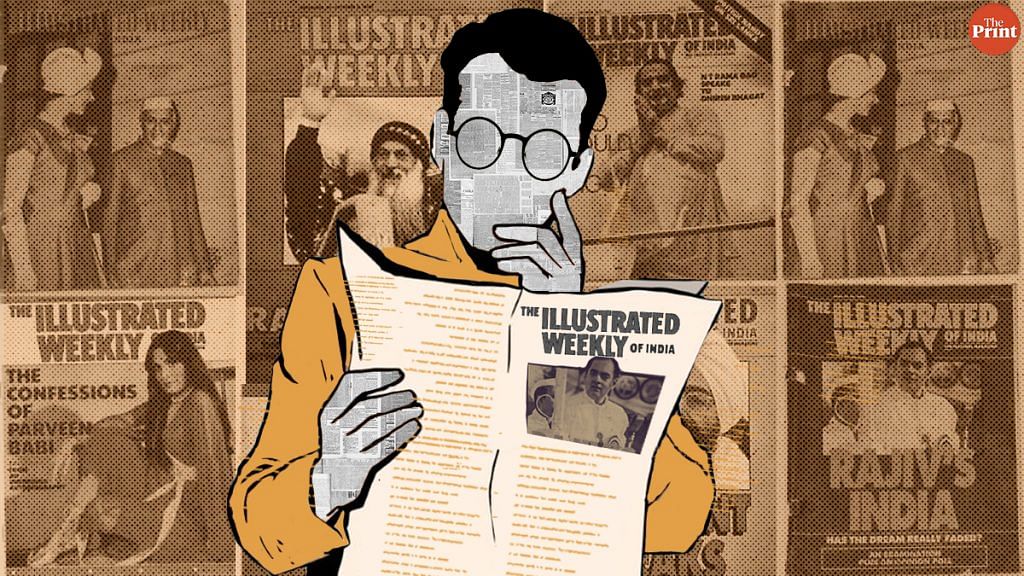India of the 1960s and 1970s hadn’t opened its doors to liberalisation yet and news was presented in a very staid and officious manner. But one magazine stood out during that time for its bold and thought-provoking articles – The Illustrated Weekly of India.
The magazine, a product of the Times Group, captured the imagination of the urban erudite readers. Under the leadership of editors like Khushwant Singh, M.V. Kamath and Pritish Nandy, it became a must-have for urban families.
The magazine or the Weekly, as many preferred to call it, catered to all segments – men, women and even children. It had something for everyone.
Besides long-form articles, it had a ‘Phantom comic series’ section, which was a great hit with the youngsters. It also featured illustrations by Mario Miranda and R.K. Laxman. It had a gossip column, and sometimes, bold photographs of models in bikinis too.
Also read: Beep. Play. Repeat: How the pager pushed Indian professionals to become savvy
“Yet, the magazine never lost its character of being a serious read, and the brand value was never in question,” said advertising and marketing expert Santosh Sood.
“Today, publications have to be more careful in putting out content and photographs. But the fact that Illustrated Weekly was putting out bold as well as politically and socially aggressive content so many years ago, when the social fabric was very different, is quite an achievement,” Sood said.
Between 1969 and 1978, Khushwant Singh was the editor of the magazine. His ‘Editor’s Page’ became one of the most widely read columns across India. But his interview of Sanjay Gandhi in the Weekly created quite a flutter.
“He was controversial and unapologetic yet respected, and credit must be given to him for creating an unparalleled buzz, which contributed to the popularity of the magazine,” said Sood.
Also read: Liril and Lalitaji: A tale of two ads and how they captured India’s attention
Senior journalist Coomi Kapoor who was the political editor at the Weekly when Pritish Nandy was heading it said the branding of the magazine kept changing with its editors.
“The magazine had a somewhat soft character and a lot of literary and religious stuff used to get featured, but from the ‘70s, its character changed. It became racy and topical; the focus was primarily on in-house writing and it stood out for picking up controversial issues besides, of course, issues relating to human interest,” Kapoor said.
Kapoor recalled her time at the Weekly when the magazine carried in-depth analysis and exposés. The exposés on the controversial self-styled godman Chandraswami, Arun Nehru’s diplomatic messages to the Swedish embassy on Bofors, and the big breaking story on implementation of the Mandal Commission were just a few of the innumerable articles that the Weekly published.
While sharp and edgy content was the Weekly’s strength, experts say that lack of competition was also a reason why the brand became such a huge success in those years.
Sreekant Khandekar, co-founder of media-advertising companies afaqs and A&M, said, “The magazine not only stood tall in terms of content but also faced little competition, and that’s why it was a success”.
In the 1970s, Khandekar said, “distribution was the king and the only marketing activity”. So, it was important that the vendors picked up the copies of the Weekly for distribution.
Also read: Khushwant Singh, the man who amused everyone, but spared none
By the early 1990s, the Weekly had turned into a tabloid, and was facing stiff competition from current affairs magazines, like India Today and Outlook. In 1993, the Times Group decided to stop the publication. With this, the illustrious journey of the Illustrated Weekly came to an end.
